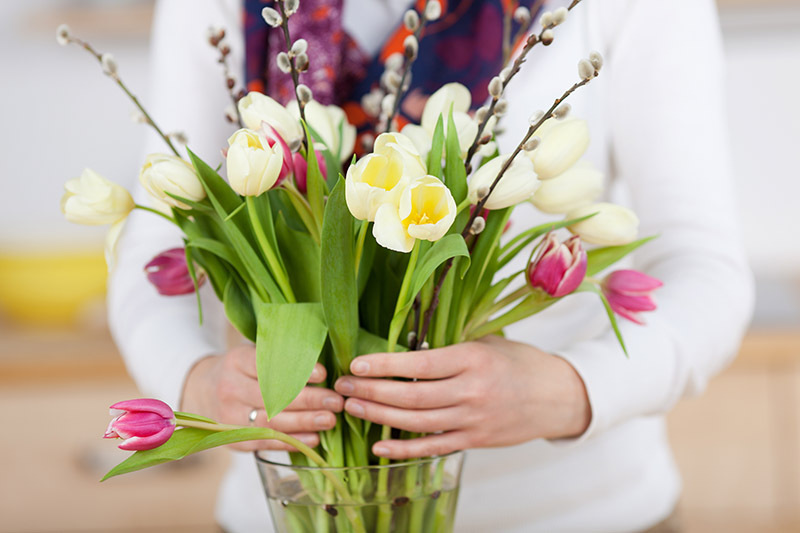Green Thumb's Guide to Orchid Care
Posted on 03/07/2025
Green Thumb's Guide to Orchid Care
Orchids, with their exotic beauty and diverse array of species, are renowned worldwide as one of the most coveted plants for both beginners and seasoned gardeners. This comprehensive guide will provide you with everything you need to know about orchid care, covering the best practices, misconceptions, and tips for keeping your orchids healthy and thriving year-round.

Understanding Orchids: A Brief Overview
Before diving into the intricacies of orchid care, it's essential to understand what makes these unique flowering plants so special. Orchids belong to the vast Orchidaceae family, boasting over 25,000 different species and more than 100,000 hybrids. Their phenomenal diversity means that learning proper orchid plant care can transform your home or garden into a living masterpiece.
Why Are Orchids So Popular?
- They offer a wide range of exquisite flower shapes and colors.
- Orchids can bloom for weeks or even months.
- Many varieties adapt well to indoor environments.
- Their air-purifying qualities enhance indoor spaces.
- Cultural symbolism: Orchids are associated with beauty, love, and strength.
Choosing the Right Orchid for Your Environment
The first step in effective orchid maintenance is selecting the right type of orchid for your climate, decor, and care preferences. Here are some popular beginner-friendly species:
- Phalaenopsis (Moth Orchid): Known for its long-lasting blooms and easy care requirements.
- Cattleya: Famous for their large, fragrant flowers and bright colors.
- Dendrobium: Hardy and resilient, perfect for those new to orchid growing.
- Oncidium: Often called the "dancing lady" for their delicate appearance.
- Paphiopedilum (Lady Slipper): Uniquely shaped blooms, great for collectors.
Tip: Consult with local nurseries to find orchid varieties suited to your local humidity and temperature levels.
Essentials of Orchid Care
Light: The Key Ingredient
Bright, indirect sunlight is vital for most indoor orchid care. Too much direct sun can scorch leaves, while insufficient light diminishes their ability to bloom.
- Phalaenopsis Orchids: Moderate, filtered light; east-facing windows are ideal.
- Cattleyas and Dendrobiums: Prefer brighter light but avoid harsh midday sun.
- Oncidium: Thrive in well-lit conditions, tolerating slightly more sun exposure.
Observation tip: Healthy leaves should appear bright green. Dark green leaves usually indicate a lack of light, while yellowish leaves may signal overexposure.
Watering Your Orchids Correctly
Proper watering is crucial to orchid care, as overwatering can lead to root rot, the number one killer of house orchids.
- Most orchids need to be watered once every 5-10 days.
- Allow potting media to become nearly dry before watering again.
- Use room temperature, non-chlorinated water for best results.
- Do not let water accumulate in the crown or base of the plant.
- Consider using the "ice cube method" with Phalaenopsis orchids for consistent moisture--simply place 2-3 ice cubes on the soil once a week.
For a more precise approach, gently insert your finger into the media--if it feels dry, it's time to water.
Humidity and Air Circulation
Orchids typically favor a humidity level between 40% and 70%. Low humidity often leads to shriveled leaves or buds that drop prematurely.
How to boost humidity:- Use a humidity tray or pebble tray under the pot.
- Mist orchid leaves gently in the morning.
- Group orchids together--plants naturally increase local humidity.
- Employ a small fan in the room for air circulation; stagnant air can foster disease.
Optimal Potting Media and Repotting
Unlike most houseplants, orchids do not grow in soil. Instead, they thrive in various media such as bark chips, sphagnum moss, perlite, or a mixture.
- Repot orchids every 1-2 years--preferably after flowering season or when the media breaks down.
- Check for healthy, white to greenish roots.
- Always choose pots with ample drainage holes.
- Clear plastic pots are popular for monitoring root health and moisture.
Pro-tip: When repotting, trim away any dead or mushy roots with sterilized scissors to promote even healthier growth.
Fertilizing Orchids for Maximized Blooms
Fertilization plays a major role in orchid plant health. Orchids are light feeders, but they still benefit from regular doses of nutrients during their active growth periods.
- Use a balanced, water-soluble fertilizer (20-20-20) diluted to a quarter- or half-strength.
- Feed every two weeks during the growing season (spring and summer).
- Fertilize only once a month during fall and winter.
- Flush the pot with clear water once a month to prevent salt build-up.
Remember: "Weakly, weekly" is a guiding principle for feeding orchids.
Common Orchid Problems and Solutions
Yellow Leaves
Common causes: Overwatering, poor drainage, sudden changes in temperature, or direct sunlight. Trim dead leaves, check watering schedule, and adjust light exposure accordingly.
Root Rot
Symptoms: Mushy, black or brown roots with a foul smell. Usually results from overwatering or non-draining containers. Solution: Remove from pot, trim affected roots, and repot in fresh media.
Pest Invasions
- Mealybugs, scale, and spider mites frequently attack orchids.
- Wipe leaves with a soft, damp cloth or use a solution of water and mild dish soap.
- In serious cases, horticultural oil or insecticidal soap can help.
Inspect new plants for pests before bringing them indoors.
Encouraging Orchids to Bloom Again
Frustrated that your orchid won't rebloom? Here's how to encourage a healthy orchid to flower again:
- Ensure adequate light: Increase brightness if needed (but avoid scorching leaves).
- Temperature drop: Orchids like Phalaenopsis often initiate spikes after experiencing slightly cooler nights (by 10?F/5?C) for a few weeks.
- Maintain steady humidity and watering habits.
- Fertilize regularly during active growth.
- Prune old flower spikes just above a node to stimulate blooming in some species.
With ideal conditions, many orchid varieties can bloom multiple times a year.
Year-Round Orchid Maintenance Schedule
Spring and Summer
- Increase watering frequency as plants enter active growth.
- Provide regular feeding with diluted liquid fertilizer.
- Repot as needed after flowering ends.
- Monitor for pests and treat promptly.
Fall and Winter
- Reduce watering as growth slows.
- Lower, less frequent fertilizing.
- Maintain adequate humidity as indoor heaters can dry air.
- Keep orchids away from cold drafts and ensure adequate but limited light.
Advanced Tips for the Enthusiastic Orchid Grower
Orchid Propagation
While typically propagated from seed, home gardeners can sometimes achieve success with division or keiki (baby plantlet) separation:
- Wait until the keiki forms several roots, then gently separate and pot individually.
- For sympodial orchids (like Cattleya), divide clumps ensuring each has 3-5 healthy pseudobulbs.
Promoting Air Circulation
Proper airflow minimizes fungal diseases. Position a fan nearby on a low setting--especially important in humid climates or crowded arrangements.
Dealing with Dormancy
Some species like Dendrobium and Oncidium require a dormant rest period--less water and fertilizer, cooler temperatures, and patience until new growth emerges. Recognize and respect the specific needs of your chosen orchid type.

Frequently Asked Questions About Orchid Care
1. How do I know if my orchid needs water?
Check the potting media: if it's dry an inch below the surface, it's time to water. For transparent pots, observe root color--bright green is wet, silvery is time to water.
2. Should I cut back orchid flower spikes?
For many orchid types, trimming spent spikes just above the nearest node can encourage new blooms. However, some orchids bloom only once per spike--verify the species before cutting.
3. Why are my orchid leaves wrinkled?
This symptom often points to water stress--either too much or too little water. Assess the roots for signs of rot or dehydration and adjust care accordingly.
4. Can I grow orchids outdoors?
Many orchid species thrive outdoors in mild, humid climates with indirect light and protection from wind. Always bring them indoors before winter in temperate regions.
Conclusion: Nurturing Your Green Thumb
Caring for orchids is a richly rewarding pastime that brings natural elegance into any space. With the proper combination of light, water, humidity, feeding, and patience, anyone can become an orchid expert.
May this Green Thumb's Guide to Orchid Care inspire you to cultivate a thriving collection and enjoy the unrivaled beauty of these remarkable plants!
For more tips and in-depth orchid gardening advice, bookmark this orchid care resource and revisit as your green thumb flourishes!
Latest Posts
Blooming Joy: Celebrate Birthdays with Perfect Flowers
Unlocking the symbolism and colorful brilliance of peony flowers
Green Thumb's Guide to Orchid Care
Simple ways to maximize the lifespan of your beloved flowers





